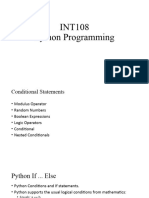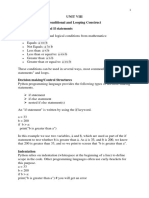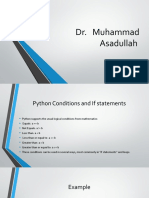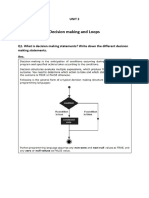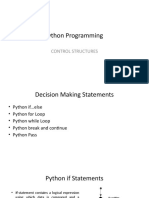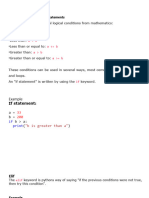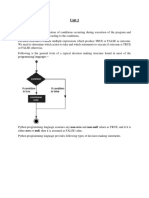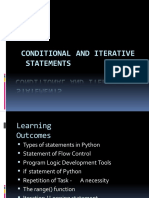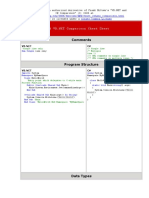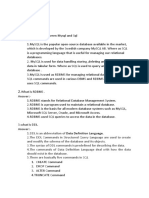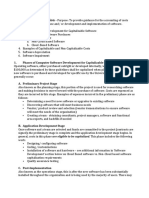0% found this document useful (0 votes)
22 views23 pagesUnit 2
Conditional statements in Python allow for decision making and code execution based on conditions. There are several types of conditional statements including if statements which execute code if a condition is true, if-else statements which allow alternative code execution if a condition is false, and nested conditional statements which allow conditional logic within other conditional blocks.
Uploaded by
Sushmita SharmaCopyright
© © All Rights Reserved
We take content rights seriously. If you suspect this is your content, claim it here.
Available Formats
Download as PDF, TXT or read online on Scribd
0% found this document useful (0 votes)
22 views23 pagesUnit 2
Conditional statements in Python allow for decision making and code execution based on conditions. There are several types of conditional statements including if statements which execute code if a condition is true, if-else statements which allow alternative code execution if a condition is false, and nested conditional statements which allow conditional logic within other conditional blocks.
Uploaded by
Sushmita SharmaCopyright
© © All Rights Reserved
We take content rights seriously. If you suspect this is your content, claim it here.
Available Formats
Download as PDF, TXT or read online on Scribd
/ 23










